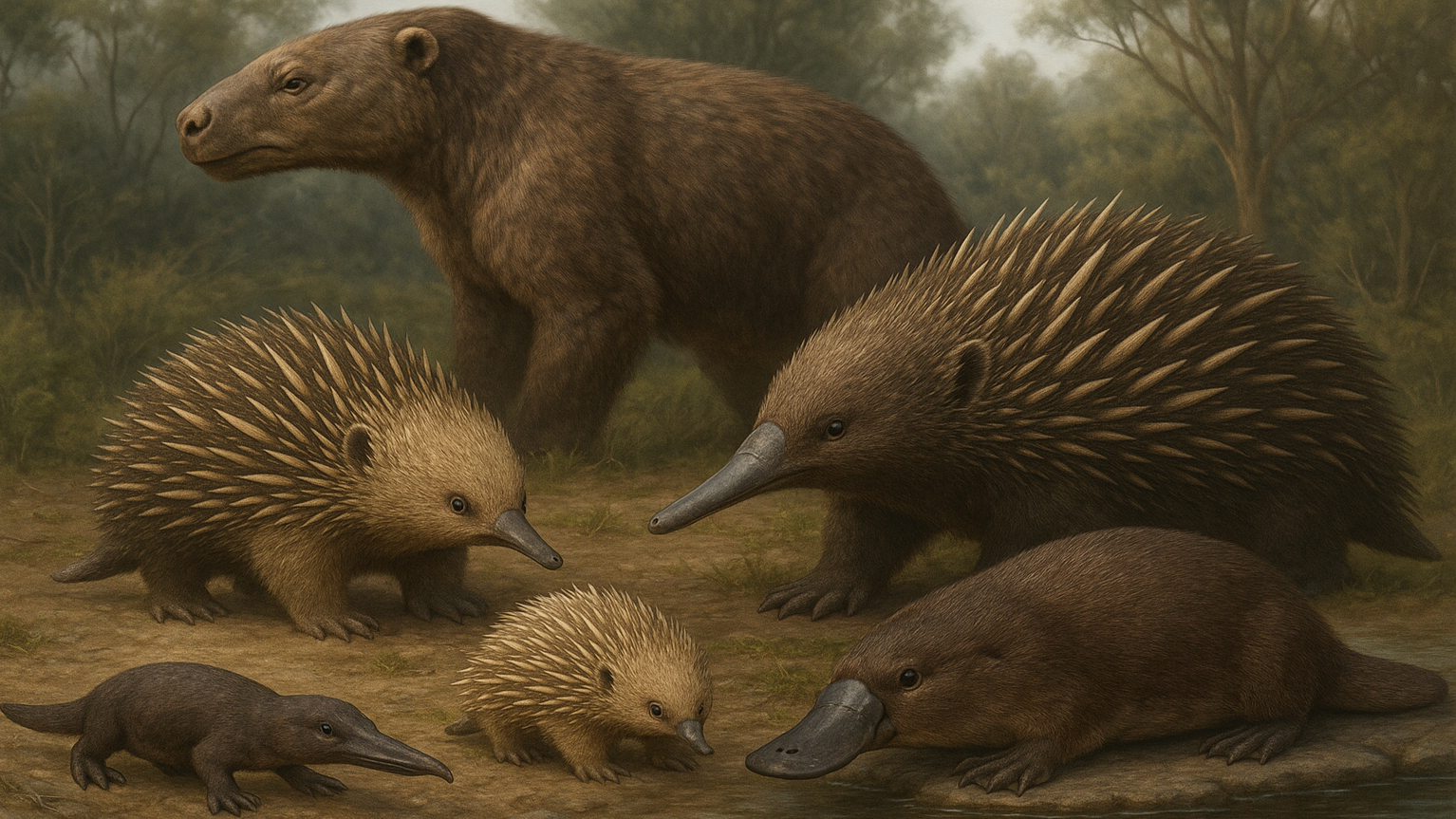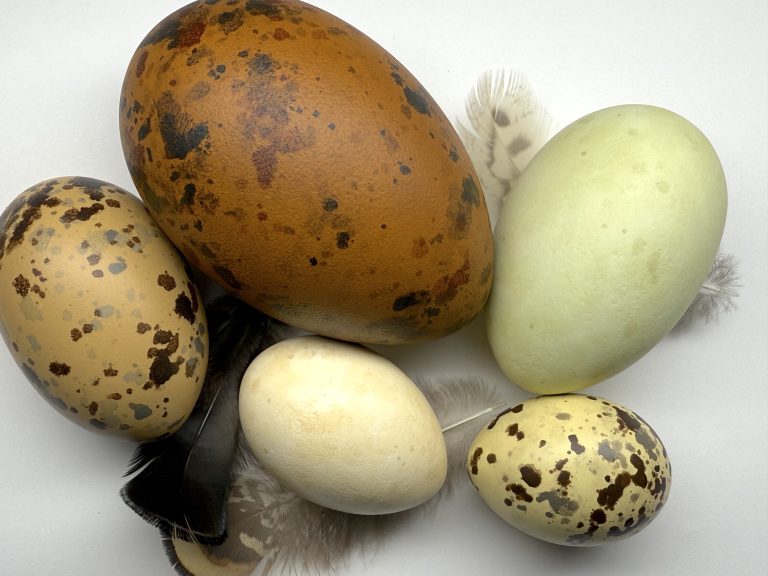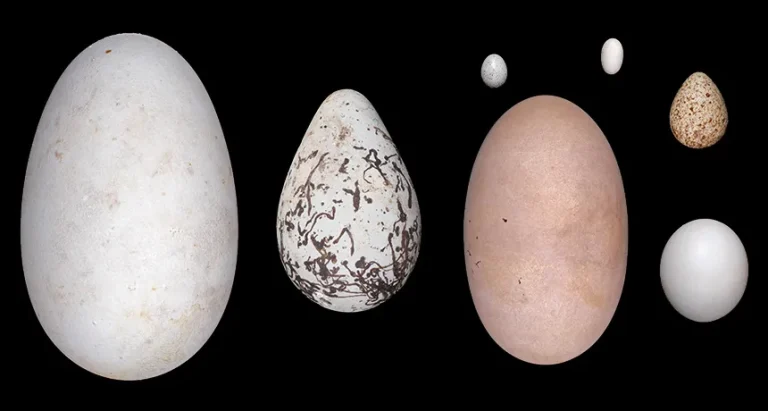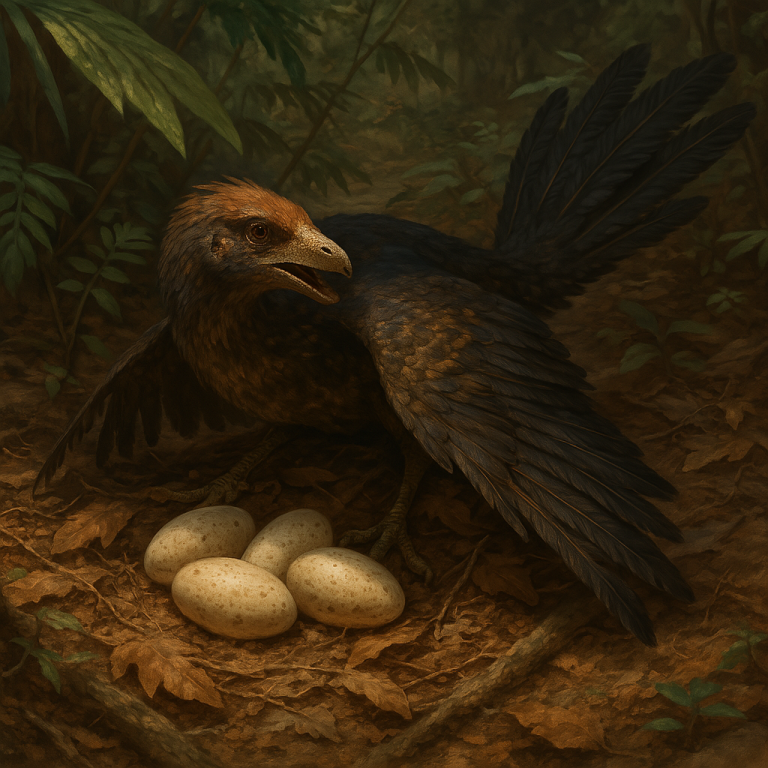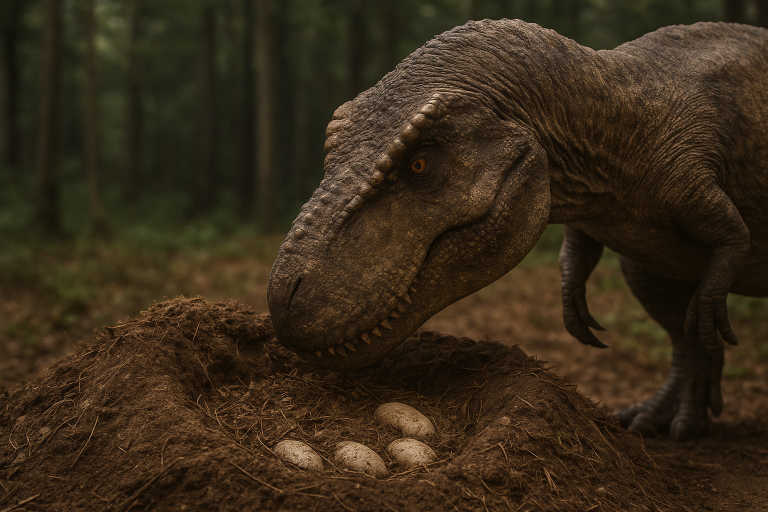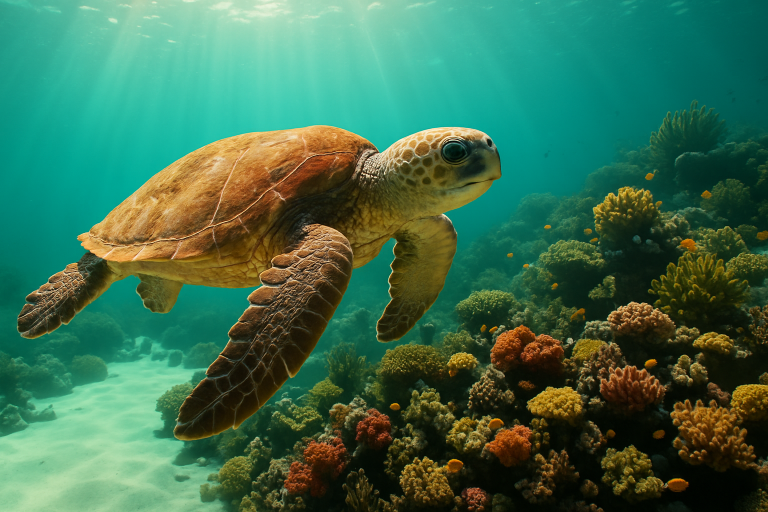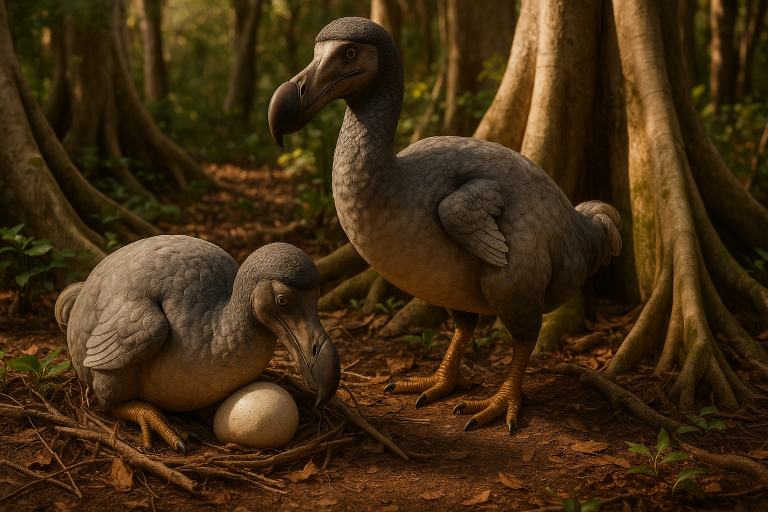Egg-Laying Mammals: The Curious World of Monotremes
Imagine the surprise of early scientists upon seeing a duck-billed platypus for the first time: this furry, beaver-tailed creature with a duck’s bill and webbed feet looked so bizarre that the first specimen sent to Europe in the 1790s was thought to be a hoax, sewn together from different animals. Yet the platypus is very real and it is not alone in its oddities. Together with the spiny anteater known as the echidna, it belongs to a most peculiar lineage of mammals: the monotremes, the only mammals on Earth that lay eggs. These egg-laying mammals provide a fascinating window into the deep evolutionary past of the mammalian family, while also showcasing unique adaptations in reproduction and parental care. Here we’ll explore the ancient origins of monotremes, meet the modern platypus and echidnas, and learn how these mammals form and care for their eggs. We’ll discover what their eggs are like, from size and structure to incubation, and peek into the nesting burrows and pouches where devoted mothers tend their fragile, hatchling young.
Ancient Origins in the Mammalian Family Tree
Monotremes may be few in number today, but their lineage is ancient. In the grand evolutionary tree of mammals, they represent an early branch that split off long before the rise of modern placental mammals (like humans) and marsupials (like kangaroos). Genetic and fossil evidence indicates that the ancestors of monotremes diverged from other mammals roughly 160 to 210 million years ago during the age of dinosaurs. In other words, monotremes are survivors of an original mammalian stock that dates back to the Jurassic period. In fact, many traits of the first true mammals likely resembled those of monotremes. Those earliest mammals almost certainly laid eggs and probably had a single opening, or cloaca, for reproduction and excretion. The very term “monotreme” comes from Greek for “single hole,” referring to the cloaca that monotremes share with reptiles and birds. This hints that egg-laying and a cloaca were ancestral features, later lost in other mammal lines as live birth evolved.
Fossil discoveries reinforce how deep monotreme roots go. The oldest known monotreme fossils, such as the jaw of Teinolophos from early Cretaceous Australia (~110 million years old), show that early monotremes coexisted with dinosaurs. For much of the Mesozoic era, egg-laying relatives of the platypus and echidna scurried in the underbrush while larger reptiles ruled the land. A remarkable fossil of a platypus relative named Monotrematum from about 61 million years ago was unearthed in Patagonia, Argentina, confirming that monotremes once spanned the southern continents of Gondwana. Over the eons, however, other mammals, especially placental mammals, became dominant across the world, and monotremes survived only in Australasian refuges. Scientists hypothesize that monotremes found a lasting niche by exploiting ecological opportunities that other mammals could not. For example, one genetic study suggests that the monotreme ancestors might have been semi-aquatic. By laying eggs and living in water, they avoided direct competition with marsupials on land, since baby marsupials in pouches would drown underwater. Whatever the reasons, the monotreme lineage endured while many other early mammal lines went extinct. Today, just five species remain, one platypus and four echidnas, living relics of an ancient experiment in mammalian evolution.
To put their long history in perspective, below is a simplified timeline of where monotremes fit in the mammalian story:
| Time (million years ago) | Evolutionary Milestone |
| ~315 (Carboniferous) | Split between ancestral synapsids (proto-mammals) and sauropsids (reptile/bird lineage). These early synapsids eventually give rise to mammals. |
| ~200–160 (Jurassic) | Monotreme lineage diverges from other mammals. Early mammals at this time likely lay eggs and have a cloaca, much like modern monotremes. |
| ~125 (Early Cretaceous) | Oldest monotreme fossils (e.g. Steropodon and Teinolophos in Australia) date to ~110–125 Mya, indicating monotremes lived alongside dinosaurs. |
| ~66–60 (Paleocene) | After the dinosaur extinction, monotremes persist. A fossil platypus relative (Monotrematum) in South America (~61 Mya) shows monotremes once inhabited Gondwana beyond Australia. Marsupial and placental mammals are diversifying on other continents. |
| Present (Quaternary) | Only five monotreme species survive, all in Australasia: the duck-billed platypus and four species of echidnas (one short-beaked echidna in Australia, and three species of long-beaked echidnas in New Guinea). These are the sole living egg-laying mammals. |
As this timeline shows, monotremes are a primordial branch of the mammal family tree. Despite their reptilian tendencies, they are true mammals complete with fur, warm blood, and milk production. Indeed, monotremes possess all the hallmarks of mammals. They have hair on their bodies and nurse their young with milk, and anatomically they have the distinctive single bone in the lower jaw and three middle-ear bones that define mammals. Yet, unlike the other mammal groups of marsupials and placentals, monotremes never switched fully to internal gestation. Instead, they retained the egg-laying habit of our distant ancestors. In evolutionary terms, monotremes are living fossils that preserve the early chapter of mammalian reproductive history, giving us clues to how early mammals might have lived and reproduced.
Modern day monotremes: Platypus and Echidnas
Today’s egg-laying mammals consist of two very different kinds of creatures: the duck-billed platypus and the echidnas, also known as spiny anteaters. At first glance, these animals don’t even appear closely related to each other, let alone to more familiar mammals like cats or primates. The platypus (scientific name Ornithorhynchus anatinus) is an aquatic, otter-sized mammal endemic to eastern Australia. It has a flat, streamlined body and dense waterproof fur for swimming, a broad and pliable duck-like bill, and a paddle-like tail reminiscent of a beaver’s. Early observers described it as an uncanny patchwork of different animals seemingly half bird, half mammal.
The platypus uses its bill to sense prey via electroreception spending much of its time in rivers and streams, feeding on aquatic invertebrates. It is mostly nocturnal and extremely shy. So elusive that it wasn’t photographed in the wild until the 20th century. Males have a spur on each hind leg that can deliver a painful venom, a trait unknown in other mammals. Female platypuses, interestingly, are born with ankle spurs too but lose them as they mature. The platypus truly lives up to its reputation as one of nature’s strangest animals.
On the other side of the monotreme family are the echidnas, which at first glance resemble a cross between an anteater and a hedgehog. Echidnas are land-dwelling, covered in coarse hair and spines, and have elongated sniffing snouts that probe for ants and termites. Four species of echidna exist today: the short-beaked echidna (Tachyglossus aculeatus), common throughout Australia and New Guinea, and three species of long-beaked echidna (Zaglossus genus) found only in New Guinea’s highlands.
Echidnas are solitary, slow-moving creatures that sniff around logs and anthills, using a sticky tongue to slurp up insects. They can roll into a spiny ball when threatened, much like hedgehogs or porcupines although they are unrelated to those placental mammals. While they lack the platypus’s swimming abilities, echidnas share some of the platypus’s more unusual features. For instance, echidnas also have a cloaca, a single opening for waste, reproduction and laying eggs. They even have a rudimentary spur on the ankle although in echidnas these spurs are not venomous. Both platypus and echidna also lack true teeth as adults. The platypus grinds food with rough pads in its bill, and echidnas grind food between spines on the roof of the mouth. This gives us a hint that their ancestors diverged before modern mammals evolved the varied teeth we see in most species today.
Despite their outward differences, platypuses and echidnas share the core characteristics of monotremes. Both are covered in hair. Indeed, a platypus’s fur is so dense it rivals the insulation of otter or polar bear fur. Both regulate their body temperature like other mammals, though at around 32°C (90°F) their body temperature is notably lower than the ~37°C typical of most mammals. And critically, both platypus and echidna females lay eggs and produce milk for their offspring albeit with their own peculiar twists. Neither creature has nipples. Instead, monotremes “sweat” milk from special glands on their belly, and the babies lap the milk directly from the mother’s skin or fur. This primitive mode of suckling is likely a holdover from an early stage in mammalian evolution. To compensate for the lack of a focused nipple for the baby to latch onto, monotreme milk has evolved to be especially rich in antimicrobial proteins that help protect the young from infections as they feed off a patch of skin. In many ways, monotremes are a patchwork of features, yet undeniably mammalian in their warm-blooded, milk-nourishing care of the young. These quirks make monotremes a source of endless fascination and a subject of serious scientific interest, as they offer insight into how early mammals might have functioned.
Monotreme egg biology
The process of reproduction in monotremes is a blend of the familiar and the exotic. Being mammals, monotremes have internal fertilization. That is, they mate and conceive their young inside the mother’s body, just as other mammals do. But unlike placental mammals which develop the embryo internally attached to a placenta or marsupials which give birth to tiny underdeveloped young, monotremes take an intermediate strategy. The embryo is nurtured internally for a time, then encased in an egg and laid to finish its development externally. The female monotreme’s reproductive tract reflects this unique approach. Monotremes possess two ovaries, and in echidnas both ovaries are functional. In the platypus, however, only the left ovary is active, an odd quirk shared with birds, which also typically use only one ovary. Once a female platypus or echidna ovulates, the egg that is released is tiny and only partially developed. As it travels down the oviduct, it gets surrounded by layers of albumen (egg white) and a thin, leathery shell is added around it by a specialized shell gland. In platypuses, the eggs remain in the uterus for about two to four weeks where the embryo starts developing and the egg gains nutrients from the uterine secretions. Essentially, the monotreme egg functions somewhat like a “mini-uterus” during those early stages, receiving nutrition through an interface of the egg membranes and the mother’s tissues. In fact, monotreme eggs have less yolk than, say, a reptile egg of similar size, because the monotreme embryo is partly sustained by its mother before the egg is laid. During this period inside the mother, the egg grows in size and the embryo reaches a more advanced stage than would a reptile or bird embryo of the same egg age. By holding the egg internally at body temperature for a couple of weeks, the monotreme mother ensures that when the egg is finally laid, the developing baby is already well on its way.
When the mother is ready to lay, she typically produces a small clutch of eggs and expels them through her cloaca. Platypus females lay one to three eggs at a time, whereas echidnas usually lay a single egg per breeding season. The eggs are round or slightly oval and very small. In the platypus they are about 14 millimeters in diameter, roughly the size of a large marble. Echidna eggs are only a bit larger, about the size of a grape and weigh just 1.5–2 grams. For comparison, a chicken egg is ~50 grams. The shell of a monotreme egg is not hard like a bird’s egg but flexible and leathery, much like the soft-shelled eggs of lizards or turtles. If you were to touch a monotreme egg, it would feel a bit leathery or rubbery rather than rigid. Inside, these eggs are true amniote eggs with structures common to all egg-laying vertebrates. They are complete with a yolk to nourish the embryo and extraembryonic membranes like the amnion and allantois that manage gas exchange and waste.
Diagram of a monotreme egg in cross-section, showing its key components: (1) the thin, leathery shell; (2) the yolk, which provides nutrients; (3) the yolk sac surrounding the yolk; (4) the allantois, a membrane for metabolic waste and gas exchange; (5) the developing embryo; (6) amniotic fluid; (7) the amniotic membrane (amnion) that encloses the embryo; and (8) the chorionic membrane just inside the shell. Monotreme eggs are small and have only modest yolk reserves, as the embryo is partly nourished in utero before laying. They share the basic amniotic egg structure seen in reptiles and birds. Despite their small size, these eggs are sufficient to carry the offspring through the final stages of embryonic development outside the mother’s body.
In addition to being small and soft-shelled, as mentioned, they have some noteworthy characteristics shaped by the monotremes’ unique reproductive strategy. Monotreme eggs are often described as looking a bit like miniature reptile eggs. They are pale, whitish, and have a pliable shell. The size is incredibly small relative to the mother’s body size. A platypus is about 40–50 cm long and 1–2 kg in weight; the eggs weigh only a few grams in total. In comparison, a reptile or bird of similar body size would lay a much larger egg or give birth to live young. The reason monotreme eggs can be so small is that the mothers invest in carrying the developing embryo internally for weeks, so by the time the egg is laid, it doesn’t need a huge yolk supply. Still, within that tiny egg is everything the developing embryo needs for the final sprint of development. The structure of the egg is that of a classic amniote egg; an evolutionary innovation that originally allowed the ancestors of reptiles, birds, and mammals to reproduce on land without water. Monotreme eggs contain all the same membranes as a reptile or bird egg: the amnion that creates a protective fluid-filled sac around the embryo, the yolk sac that draws nutrients from the yolk, the allantois that stores waste and facilitates respiration, and the chorion that surrounds everything and aids gas exchange. Because monotremes are warm-blooded, the temperature during incubation is maintained around the mother’s body temperature (approximately 30–32°C) when she’s incubating the eggs. This is cooler than most birds incubate their eggs (birds often around 37–38°C), but monotreme development has adapted to those lower temperatures.
The shell is papery and only modestly calcified. Under a microscope, scientists find that monotreme eggshells have multiple layers, including an inner, protein-based layer that is membrane-like and an outer layer with calcium deposits, but nowhere near as thick or rigid as a bird eggshell. This is why monotreme eggs feel leathery. The soft shell likely facilitates the hatching process. A tiny puggle can more easily slice through a pliable shell than a hard one. It might also relate to the fact that monotreme eggs absorb some nutrients and water while inside the mother, requiring a bit of flexibility. Interestingly, monotreme eggs continue to grow slightly after being laid by absorbing water from the nesting environment or pouch, which helps the growing embryo. This is similar to some reptiles whose eggs swell by taking in water.
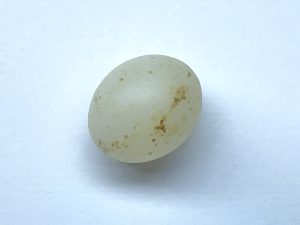
Platypus
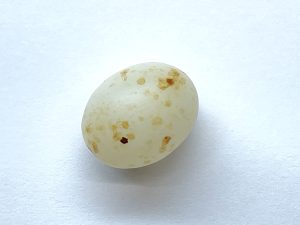
Short-beaked Echidna
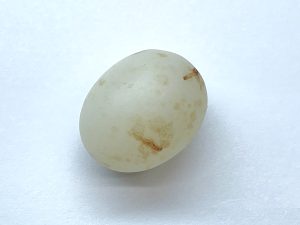
Long-beaked Echidna
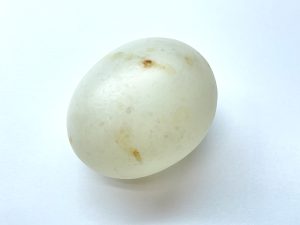
Murrayglossus
Despite being laid externally, the developmental stages inside monotreme eggs are quite advanced. In platypuses, scientists describe three phases of embryo development within the egg: initially, the embryo has no functional organs and relies entirely on the yolk; then it begins to form its body, developing features like fingers/toes, and finally it grows an egg tooth to prepare for hatching.
By the time the baby emerges, it is much less developed than a newborn placental mammal. Like a baby bird or reptile, it comes equipped with an egg tooth and a fleshy nub, called a caruncle, on its snout to help tear open the egg from inside. These tools are temporary and fall off shortly after hatching. They are vestiges of monotremes’ kinship with other egg-laying animals. With vigorous small motions, the baby monotreme slices through the leathery shell, pushing its way out into the world. A new hatchling monotreme is extremely small, hairless, and blind; essentially helpless and fetal-looking, akin to a newborn marsupial. Both platypus and echidna hatchlings are about the size of a jellybean, the latter having no spines. These little ones are sometimes affectionately called “puggles”. The term isn’t scientific, but it has caught on in popular usage. A fittingly cute name for such diminutive and endearing babies.
But why lay eggs at all, given that almost all other mammals give live birth? From an evolutionary standpoint, egg-laying in monotremes is a retained ancestral trait, not an adaptation that needed to be re-evolved. It works for them within their specific ecological niches. The mother does not have to carry a large fetus to full term, which might be advantageous for a platypus that needs agility in water or an echidna that might need to escape predators. Instead, she lays her burden down in a secure spot. The cost is that the offspring hatch at a very immature stage, so they require considerable maternal care after hatching. A task monotreme mothers dutifully take up, as we’ll see next. Monotreme eggs are a perfect example of evolutionary compromise. They carry the legacy of distant reptilian ancestors (yolk-filled eggs with extraembryonic membranes), yet are coupled with the mammalian habits of warm-bodied incubation and extensive post-hatching care.
Nests, pouches, and parental care
When it comes to nurturing their eggs and babies, monotremes exhibit behaviors that are as unusual as their physiology. Platypus mothers are burrow-builders. After mating, the female platypus will retreat to land and construct a special nesting burrow, often an elaborate tunnel up to 20 meters long that she digs into the riverbank. She chooses a spot above the water line and creates a long, twisting passage that likely helps protect against flooding and predators. In the chamber at the end, she builds a cozy nest from damp vegetation. Remarkably, the platypus female carries nesting material in a curled position under her tail. She tucks wet leaves and grass against her belly, holding them with her tail to transport them into the burrow. Inside the nesting chamber, she makes a soft bed where she will lay her eggs. During the incubation period, she leaves the eggs only infrequently to feed. Each time she does leave the burrow to swim out and hunt for food, she plugs the tunnel behind her with soil at several intervals. These soil plugs act like little barricades, possibly to deter snakes or other predators from sneaking into the nest. This also keeps the burrow environment humid and wipes off water from the mother’s fur as she pushes through them on return. After roughly 10 days, the eggs hatch, and the tiny puggles emerge. The mother then will continue to shelter them in the burrow for months. Platypus babies are born utterly helpless, blind, hairless, and about 2.5 cm long, so they remain in the nest, nourished by the mother’s milk and protected by the burrow. The mother platypus does not bring food like worms or insects to her babies. Instead, she feeds them solely with milk. As noted earlier, she has no nipples, so when it’s feeding time the mother lies on her back or side and the milk oozes from pores on her abdomen, pooling into grooves in the skin/fur from which the babies lap up. The female stays with her young nearly constantly for the first few weeks, only occasionally leaving to eat and always re-plugging the burrow entrance behind her. After about five weeks, she begins leaving the young alone for longer stretches while she forages. The offspring continue to develop in the safety of the nest, drinking milk and growing rapidly. By around four months of age, the young platypuses are covered in fur, their eyes have opened, and they are active enough to venture outside finally entering the water to start hunting on their own. The platypus mother’s parental care spans about a third of a year from laying to weaning, which is a considerable investment of time and energy. The male platypus, for his part, contributes nothing beyond mating. The male doesn’t help build the nest or care for the young at all.
Echidna mothers take a somewhat different approach, one that doesn’t require digging elaborate tunnels but involves a nifty biological trick; a temporary pouch. Female echidnas do not have a permanent pouch like kangaroos, but when they become pregnant, their belly develops a fold of skin that serves as a pouch during the breeding season. After a gestation of about 2–3 weeks post-mating, the mother echidna lays a single egg and immediately transfers it into this pouch by scooping it up with her hind claws or simply curling to press it into the pouch. The egg then sticks to the pouch wall and remains there, kept warm and safe. About 10 days later, the egg hatches right there in the mother’s pouch. The hatchling echidna, a tiny blind puggle about the size of a shelled peanut, stays in its mother’s pouch, suckling milk from two milk patches. Echidnas, like platypuses, lack nipples. Instead, the milk oozes from special glands and collects in grooves or puddles on the mother’s skin within the pouch, and the baby laps it up. The milk of echidnas (and platypuses) is notably low in lactose (milk sugar) compared to other mammals’ milk, but rich in fats and nutrients, perfect for slowly nourishing the young puggle. The mother echidna continues to carry the baby in her pouch for roughly six to seven weeks after hatching. During this time the puggle grows from the size of a grape to about that of a lemon. Crucially, around the 6- to 7-week mark, the baby’s sharp spines begin to develop – and that’s when mom’s pouch starts to become a prickly uncomfortable place! When the puggle’s little quills start to poke through its skin, the mother echidna gently deposits the youngster into a burrow or a well-hidden nest on the ground and no longer carries it on her body.
From that point on, the echidna mother switches to a part-time nursing strategy. She leaves the puggle in the nursery burrow and goes out to forage, returning every 3–6 days to nurse the baby with her milk. The puggle stays in the burrow, safe and isolated, and develops further over the weeks. Echidna mothers produce extremely rich milk, which sustains the baby for days between feeds. The mother will continue these visits for several months. In fact, baby echidnas are not fully weaned until about six months of age, which is a long childhood in the animal kingdom for egg-layers. Eventually, at around 6–7 months old, the juvenile echidna is sufficiently grown and can fend for itself, at which point the mother’s parental duties cease. She may breed again in subsequent seasons, but typically echidnas breed only once every 2–3 years, given the substantial effort each baby requires.
Throughout this process, echidna mothers exhibit remarkable maternal care. They effectively create a safe micro-environment first in their own makeshift pouch and then in a dedicated nursery burrow. During the early pouch phase, research has shown that the microbial flora, or microbiome, of the echidna’s pouch actually changes to become rich in beneficial bacteria, likely to protect the immuno-naive newborn from infections. This is akin to how mothers’ milk in placental mammals delivers good microbes to infants. Monotreme mothers, despite their ancient reproductive mode, clearly have high-tech solutions in their biology to give their young a good start.
In the grand mosaic of life, egg-laying mammals remind us that evolution often forges multiple paths to success. Monotremes, the “oddballs” of the mammal world, have persisted since the age of dinosaurs by doing things in their own peculiar way. They lay eggs like a lizard or bird, yet produce milk and nurture their young like other mammals. In their genes and anatomy, they carry echoes of distant ancestors; spurs that can be venomous, low body temperatures, even an egg-tooth at birth. Yet they thrive in their niches as modern animals, whether it’s a platypus paddling in a stream at dusk or an echidna snuffling for ants in the Outback. Scientists continue to study monotremes to unlock secrets about our mammalian origins. But beyond their scientific significance, monotremes capture the imagination. They show that motherhood and family life in mammals can take many forms. A warm burrow guarded by a devoted platypus, or a makeshift pouch cradling a delicate echidna egg. In a sense, these creatures are living tales from our prehistory, whispering of a time when our furry ancestors were small, egg-laying underdogs in a reptilian world.
References
- Panciroli, Elsa. “Australia’s Egg-Laying Mammals Provide Clues to Our Earliest Ancestor.” The Guardian, June 8, 2016.
- Stock, Petra. “Echidna Mothers Change Their Pouch Microbiome to Protect Tiny ‘Pink Jelly Bean’ Puggles, New Research Finds.” The Guardian, May 15, 2025.
- Hausheer, Justine E. “The Platypus Is Weirder Than You Ever Imagined.” Cool Green Science (Nature Conservancy blog), October 7, 2019.
- Musser, Anne Marie. “Platypus – Life Cycle and Reproduction.” Encyclopædia Britannica. Last modified May 3, 2025.
- Wikipedia. “Platypus” and “Monotreme” (various sections), and sources therein.
- Griffiths, Mervyn. The Biology of Monotremes. New York: Academic Press, 1978.

